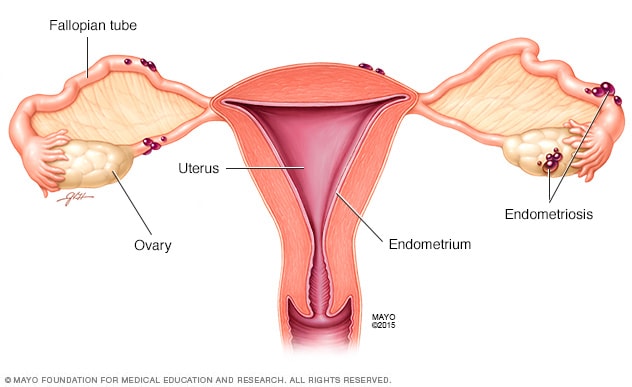One in ten women around the world is affected by endometriosis, yet the condition remains misdiagnosed, undiagnosed, misunderstood, and hardly discussed. Why is so little known about a disease that affects an estimated 1 in 10 girls and women worldwide? Why do so few women know what is causing their symptoms? Why do so many doctors not know what this disease is, how to diagnose it, or how to treat it? Globally, March is commemorated as Endometriosis Awareness Month and while the month may have ended, our awareness, education, and advocacy efforts continue all year-round.
Endometriosis (en-doe-me-tree-O-sis) is a systemic, inflammatory disease characterized by the presence of endometrial-like tissue outside of the uterus. It causes the development of adhesions, cysts, lesions, and/or nodules on organs and structures outside of the uterus. Endometriosis most commonly involves the ovaries, fallopian tubes, the tissue lining the pelvis and other organs within the pelvis. However, it can be found anywhere in the body. It is also more than just a period disease. While one of its symptoms is heavy, painful periods, common symptoms include chronic pelvic pain, pain during and after sex, pain with urination and defecation, nausea, vomiting, diarrhea/constipation, fatigue, and brain fog. Other symptoms will be present depending on where endometriosis is located.
Endometriosis is a very costly disease. Medications, surgeries, period products, fertility treatments, and lab and imaging tests are very expensive but the cost goes beyond financial. Furthermore, the symptoms can be so debilitating that some women are unable to work or are often on sick leave, which negatively affects their income. There are other costs associated with the mental, emotional, and physical impacts of the disease.
Up to 50% of women with endometriosis experience infertility, and not being able to get pregnant or carry a baby to full-term is a very real worry of many women with endometriosis. It hurts when you want to have a baby but are not able to. The pain is further deepened when people make snide remarks or hurtful comments about you not being able to have children. Additionally, the symptoms of endometriosis such as pain and fatigue often prevent women from participating in social activities. Even though they may want to hang out with their friends and spend time with their family having fun, they just may not be able to and not everyone is understanding of this.
The excruciating pain that some women experience during and after sex can make it difficult for them to have sexual intercourse with their partners, limiting how regular they have sex. This can cause a rift in the romantic relationship, especially if the partner is not understanding of how endometriosis affects the woman, is unwilling to try positions that may be more tolerable, or makes her feel bad about herself.
Chronic pelvic pain is the hallmark symptom of women with endometriosis. Women with the condition are often in pain with flares occurring at any time. These flares are unpredictable, leading to women living in fear of where and when this pain will occur. This can keep them from wanting to spend time outside of their homes. Having heavy periods that mess up your clothing can cause embarrassment and shame in women. All of these and more can contribute to women experiencing depression, anxiety, low self-esteem, and reduced quality of life.
Endometriosis can be an isolating disease; however, you are not alone. The St. Vincent and the Grenadines Association of Endometriosis, Adenomyosis and PCOS offers educational sessions and runs a support group where you will learn more about the condition and be supported by women just like you. Follow our social media pages for more information.
Written by:
Ms. Odelia Thomas
Founder and President
IG: @she.is.lotus
FB: SVG Association of Endometriosis, Adenomyosis & PCOS

